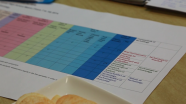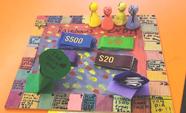Planning for practice
Planning for practice is the up-front and on-going thinking that enables a fit-for-purpose outcome to be developed. It is an essential part of all technological practice.
Planning for practice should consider:
- the physical, social, and cultural environment of an outcome
- the context the technologist will be working in.
Effective planning for practice enables developing technologists (students) to systematically account for all the factors that influence the successful fulfillment of a brief. It also supports reflection and decision making.
Related resources
Indicators of progression
Indicators of progression
The indicators of progression describe the knowledge, skills, and understandings that students should be demonstrating in the Planning for practice component of the Technology learning area.
Indicators are provided for each level of the curriculum and are accompanied by guidance for teachers.
Videos
Planning for practice
The video from the introduction tab with Rozeanne Donald is broken down into two short videos.
Teaching snapshots
Games for rainy days
Producing games required years 1–3 students to record the resources they needed to make their games and discuss the next steps for the development of their outcomes/games.
Batch production in food practical classes
Teacher Jeff Thomas finds that the context of batch production provides rich opportunities for teaching and learning about planning for practice.
Student showcase
Incomplete prototype earns scholarship
A Rangitoto College student and keen hockey player designed an original bag for hockey gear involving up-front and on-going planning to make the bag fit-for-purpose.
Technology in the School Journal and Connected
"Animation Creations", Connected, level 2, November 2018
Auckland animator Ryan Kothe explains how to create your own stop-motion animation movie. Use the article to identify key stages to produce the movie and materials, components, and/or software required at each stage of production.
Planning for practice: Key ideas (Word 2007, 23 KB)
Acknowledgment: This paper is derived from an earlier version by Dr Vicki Compton and Cliff Harwood.






